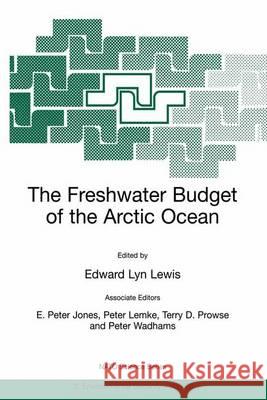The Freshwater Budget of the Arctic Ocean » książka
The Freshwater Budget of the Arctic Ocean
ISBN-13: 9780792364399 / Angielski / Twarda / 2000 / 623 str.
The hydrological cycle of the Arctic Ocean has intimate and complex linkages to global climate: changes in one affect the other, usually with a feedback. The combined effects of large river runoff, advection of meteoric water, low evaporation rates and distillation by freezing contribute to the formation of a strong halocline in the upper Arctic ocean, which limits thermal communication between the sea ice and the warmer waters of Atlantic origin below. Sea ice and freshened surface waters are transported from the marginal seas by winds and currents, ultimately exiting the Arctic Ocean through Fram and Davis Straits. Variations in the freshwater outflow from these regions affect the density structure of the Arctic Ocean itself and so the surface heat balance. Another feedback is the effect these variations have on the density profile of the water column in the Greenland and Labrador seas where, at present, convection takes place mixing surface waters downwards with those at greater depth. This downward convective motion produces dense deep waters that flow outwards from these two centres and affect the entire North Atlantic.











